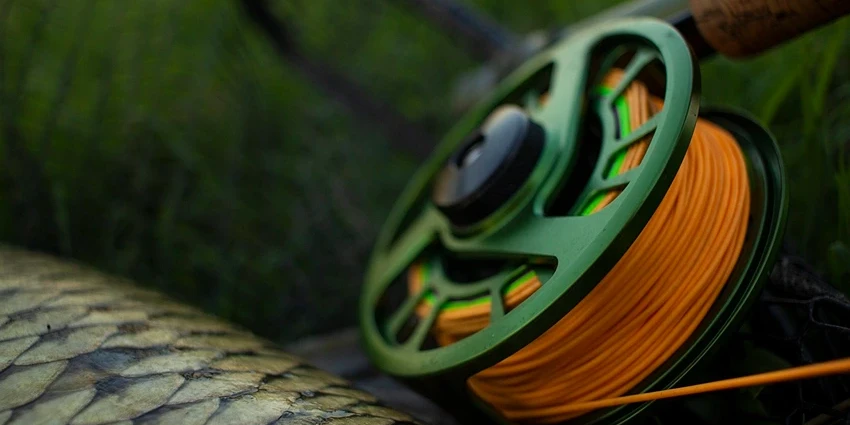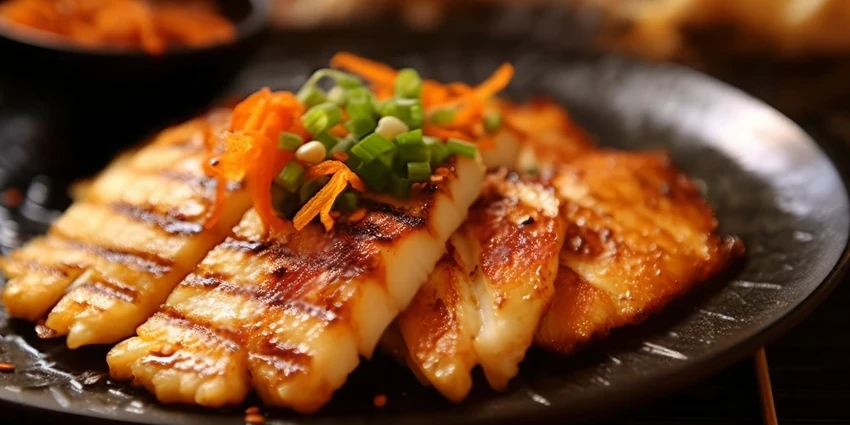All products were chosen independently by our editorial team. This review contains affiliate links and we may receive a commission for purchases made. Please read our affiliates FAQ page to find out more.
Jump to:
Can You Eat Crappie?
Yes, crappie is a popular and delicious fish to eat. Known for its mild flavor and firm texture, crappie is often pan-fried, baked, or grilled. It provides a good source of protein and can be enjoyed in various culinary preparations. Always adhere to fishing regulations for sustainable and responsible consumption.
Key Takeaways:
- Understanding Crappie: A detailed look at crappie as a species, their habitats, and distribution.
- Nutritional Benefits: Insights into the health benefits of consuming crappie.
- Cooking Crappie: A focus on cleaning, filleting, and various cooking techniques.
Crappie, a popular freshwater fish, is a favorite among anglers and culinary enthusiasts alike. Known for its mild flavor and versatile cooking potential, crappie offers a delightful experience from the moment of catch to the final culinary creation. In this comprehensive guide, we delve into the world of crappie, exploring everything from their natural habitat to the best ways to prepare and enjoy them.
Understanding Crappie
Crappie Habitat & Distribution
Crappie, predominantly found in North American waters, thrives in freshwater lakes and rivers. They are known for their preference for habitats with abundant aquatic plants, fallen trees, and rocks, which provide excellent cover and feeding grounds. According to Tilt Fishing and Outdoor Geeky, these fish are native to the eastern seaboard of the United States, extending southward to the Gulf and populating most of the country.
Table 1: Crappie Habitat Characteristics
| Feature | Description |
| Water Type | Freshwater (Lakes, Rivers) |
| Cover | Fallen Trees, Rocks, Aquatic Plants |
| Feeding Habits | Ambush Predators, Feeds on Smaller Fish and Insects |
| Active Times | Early Morning, Late Evening (Dusk) |
Their ability to adapt to various freshwater environments has made them a common target for anglers across the region.
The Nutritional Benefits of Crappie
Crappie is not just a culinary delight; it’s also packed with nutritional benefits. As Fishmasters.com and Catch And Fillet highlight, crappie is a source of essential omega-3 fatty acids, which are beneficial for heart health. The fish is also rich in vitamins like B6, B12, D, and minerals such as calcium and niacin. This combination makes crappie an excellent choice for a healthy diet.

Table 2: Nutritional Profile of Crappie
| Nutrient | Benefit |
| Omega-3 Fatty Acids | Heart Health, Reducing Inflammation |
| Vitamins B6, B12 | Energy Production, Brain Health |
| Vitamin D | Bone Health, Immune System Support |
| Calcium | Bone Strength, Cardiovascular Health |
Including crappie in your diet can offer a blend of taste and health, making it a preferred choice for health-conscious seafood lovers.
Preparing and Cooking Crappie
How to Clean and Fillet Crappie
Before cooking, proper cleaning and filleting are crucial. As per the guides from A Fellow Fisherman, Outdoor Geeky, and Tilt Fishing, here’s a step-by-step approach:
- Cleaning: Start by removing scales and guts. Make a slit behind the gills and cut off the head, followed by a slit down the belly to remove the innards. Rinse the fish with cool water.
- Filleting: Begin with a cut behind the gills, angling towards the head, but not cutting through the backbone. Run the blade across the backbone towards the tail, lift the fillet, and repeat on the other side. Remember to check for and remove any small bones.
Cooking Techniques and Recipes
Cooking crappie can be a delightful experience, thanks to its versatility. Whether you prefer it baked, fried, or grilled, crappie adapts well to various cooking methods. Premier Angler and Game & Fish Magazine offer several tantalizing recipes, including crappie tacos and tostadas, showcasing the fish’s adaptability to different cuisines.
Baked Crappie
Baking is a healthy and straightforward method. Season the fillets, place them on a non-stick sheet, and bake in a preheated oven at 400 degrees Fahrenheit for 15-20 minutes. This method is perfect for those who enjoy a light, flaky texture.
Fried Crappie
For a crispy delight, frying is the way to go. Heat oil in a skillet to 350-375 degrees Fahrenheit and fry the breaded fillets until golden brown, usually within three minutes. This method enhances the fish’s natural flavors, making it a popular choice.
Grilled Crappie
Grilling imparts a smoky flavor that’s hard to resist. Season the fillets and grill them over medium heat until they’re cooked through. This method is ideal for outdoor cooking and adds a unique flavor profile to the fish.
What Pairs Well With Crappie
Crappie’s mild flavor makes it an excellent match for a variety of side dishes. A Fellow Fisherman and Fishmasters.com suggest pairing it with staples like rice, vegetables, and potatoes. These sides complement the fish’s flavor without overpowering it, creating a balanced and enjoyable meal.
More on Cooking Crappie
Crappie Cooking Tips
To ensure the best culinary experience, here are some essential tips:
- Freshness is Key: Freshly caught crappie ensures a flaky and pleasant texture, as opposed to the messiness that can result from cooking frozen fish.
- Temperature Matters: For pan-frying, use high temperatures to avoid a mushy texture.
- Avoid Overcooking: Crappie usually cooks within 3-5 minutes. Aim for about 2 minutes on each side for optimal results.
- Variety in Recipes: While breaded crappie is popular, don’t shy away from experimenting with patties, chowder, or fresh fish cocktails.
Table 1: Crappie Cooking Temperatures and Times
| Cooking Method | Temperature (Fahrenheit) | Cooking Time |
| Baking | 400 | 15-20 mins |
| Frying | 350-375 | 3 mins |
| Grilling | Medium Heat | Varied |
What Tastes Good With Crappie
Complement your crappie dish with these side dish suggestions:
- Garlic cheese grits
- French fries
- Coleslaw
- Potato salad
These pairings enhance the crappie’s mild flavor, creating a harmonious and satisfying meal.
Register for our latest in-depth reviews and product round-ups from the experts
Enter your email address below to receive our twice monthly reviews emails.
By entering your details, you are agreeing to our terms and conditions and privacy policy. You can unsubscribe at any time.
FAQs
While crappie can be eaten raw, it’s crucial to ensure it was caught in clean, unpolluted water. Preparing it hygienically is also vital to avoid the risk of food-borne illnesses.
Yes, crappie is a healthy seafood choice. It’s low in calories and fat but high in protein, making it an excellent option for a balanced diet.
Cooked crappie can last for 3-4 days in the refrigerator. For longer-term storage, freezing is recommended for up to 6 months.
The best way to check is to ensure the internal temperature reaches 145 degrees Fahrenheit. The meat should also flake easily with a fork.
Yes, crappie can be frozen for up to six months. Wrap it tightly in plastic wrap or place it in a freezer bag for best results.
Table 2: Crappie Storage Guidelines
| Storage Method | Duration |
| Refrigerator | 3-4 Days |
| Freezer | Up to 6 Months |
Martin Cochran, renowned for his expertise in deep-sea fishing and marine wildlife, plays a pivotal role at Fresh Catch Daily. His adventures across various oceans have equipped him with unique insights and techniques, enriching our platform with diverse and engaging content for fishing enthusiasts.










